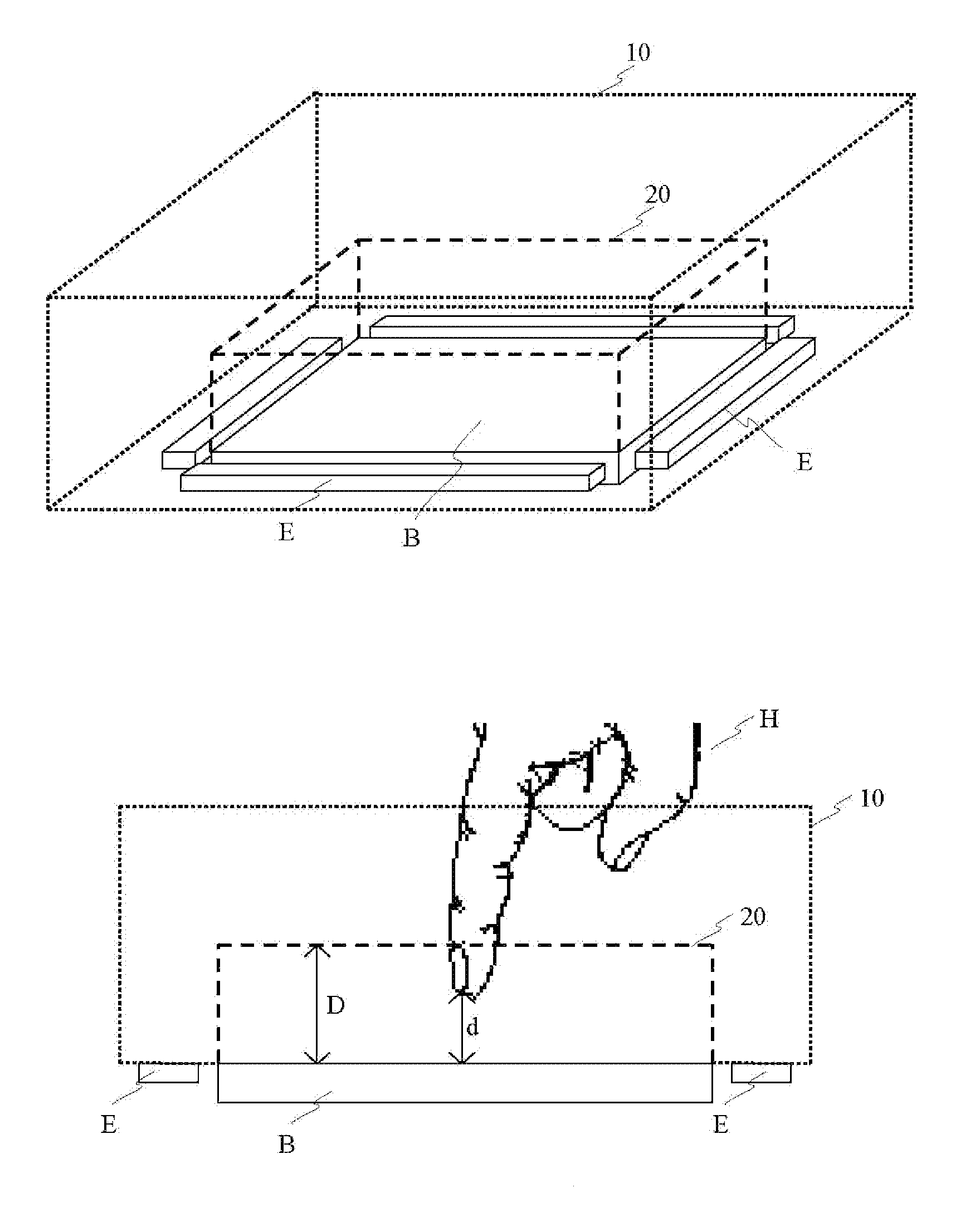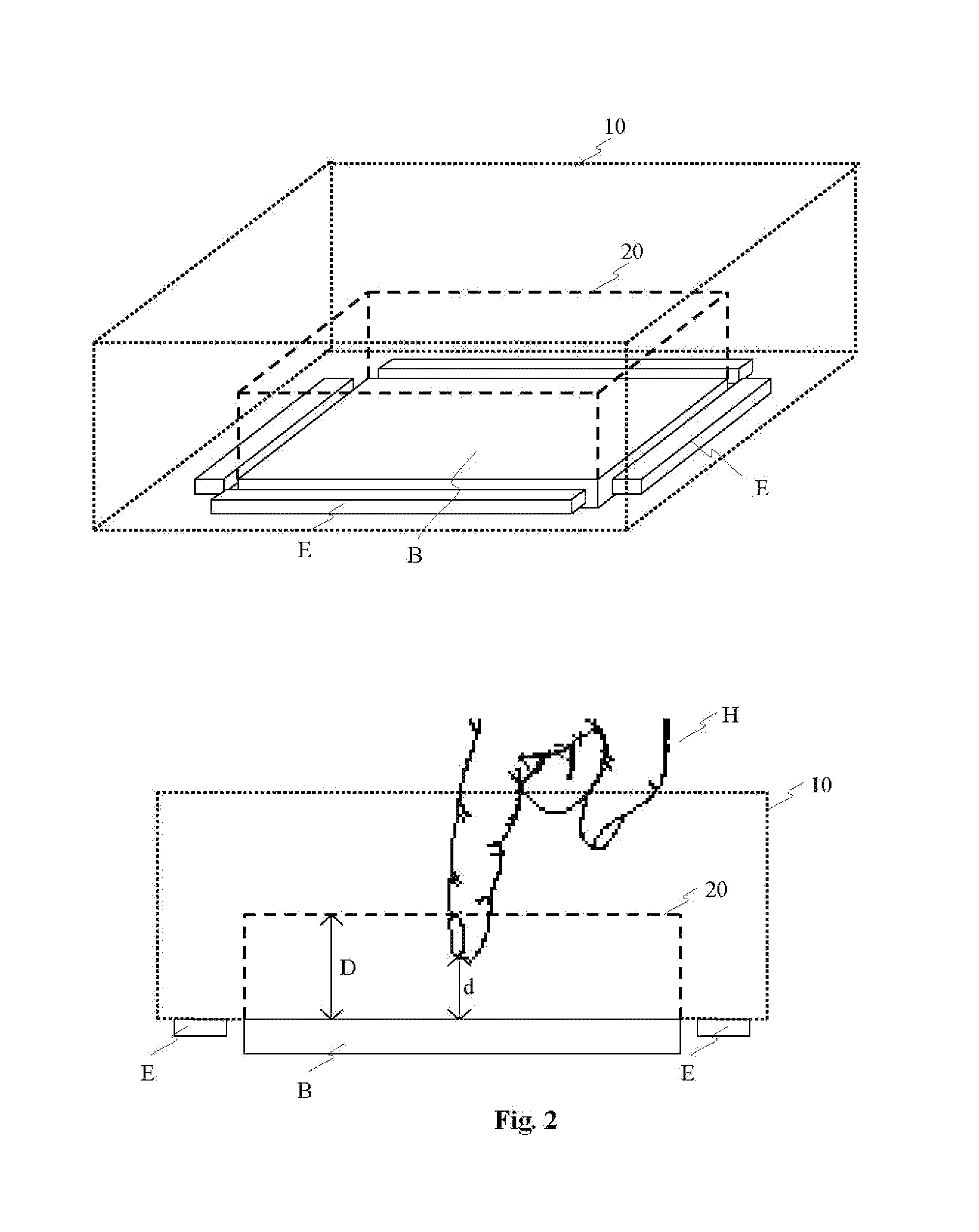System and method for contactless detection and recognition of gestures in a three-dimensional space
a three-dimensional space and gesture recognition technology, applied in the field of system and a method for the detection and recognition of gestures in a three-dimensional movement space, can solve the problems of touch-sensitive recognition systems, system errors, and high cost of systems and methods, and achieve the effect of improving the precision of the method according to the invention in that way, reducing the cost of system and method maintenance, and improving the accuracy of the method
- Summary
- Abstract
- Description
- Claims
- Application Information
AI Technical Summary
Benefits of technology
Problems solved by technology
Method used
Image
Examples
Embodiment Construction
[0081]FIG. 1 shows a flowchart of a method for the contactless detection and recognition of gestures.
[0082]In a first step 100, by means of an electrode system an electrical near-field is generated, which is formed preferably as a quasi static alternating electrical field which defines a movement space relative to a reference surface, for example a screen or a tablet PC.
[0083]The frequency f of the alternating electrical field is to be chosen in such a way that the period T corresponding to the frequency f of the alternating electrical field of the field variation (T=1 / f) is much smaller than the time the light needs to cover the stretch L, wherein L corresponds to the size of the reference surface, i.e. the wavelength of the electromagnetic waves is in case of the frequency F much bigger than the system sizes L (T>>L / c or f<<c / L, wherein c is the speed of light). Frequencies between 10 kHz and 300 kHz, preferably frequencies between 75 kHz and 100 kHz have proven particularly suita...
PUM
 Login to View More
Login to View More Abstract
Description
Claims
Application Information
 Login to View More
Login to View More - R&D
- Intellectual Property
- Life Sciences
- Materials
- Tech Scout
- Unparalleled Data Quality
- Higher Quality Content
- 60% Fewer Hallucinations
Browse by: Latest US Patents, China's latest patents, Technical Efficacy Thesaurus, Application Domain, Technology Topic, Popular Technical Reports.
© 2025 PatSnap. All rights reserved.Legal|Privacy policy|Modern Slavery Act Transparency Statement|Sitemap|About US| Contact US: help@patsnap.com



